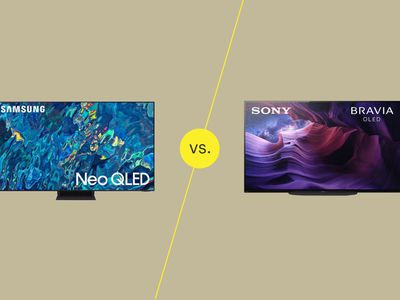
NAS Explained: Comprehensive Guide to Network Attached Storage in Just 2 Minutes

NAS Explained: Comprehensive Guide to Network Attached Storage in Just 2 Minutes
![]() Home > how-tos > Mac tips & troubleshooings > What Is NAS
Home > how-tos > Mac tips & troubleshooings > What Is NAS
What Is NAS? Network Attached Storage Review Simplified
Summary: wanna know what is NAS? Stay here for 2 minutes and read the below post to get everything about NAS.
![]() By Abby Poole |Last updated on May 8, 2021
By Abby Poole |Last updated on May 8, 2021
NAS has somewhat changed the way people backup and share data. For example, more and more DVD collectors now choose to copy and backup DVDs to NAS instead of hard drive. But many still know nothing about NAS. What is NAS? Here We give detailed but not too complicated information about NAS. You’ll get to know everything about NAS in 2 minutes even if you know nothing about what NAS is, including definition, full features review, NAS vs SAN vs DAN differences, NAS advantages and disadvantages vs Flash Drive, HD, and Cloud.
What Is NAS - NAS Definition
NAS, network-attached storage, is a severer that is designed for storage purpose. It is attached to computer network and then users can access the stored data by FTP, NFS, CFS, SMP etc. NAS is a specialized file server. If you still feel confused about what NAS is, put it more simply, NAS drive is similar to a remote drive connected to a computer in the network. NAS systems contain one or more hard disk drives that are clustered together.
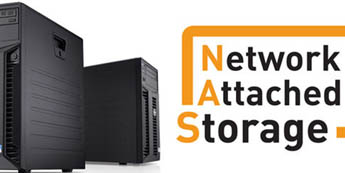
what is nas
Useful Guide to Network Attached Storage
How to Rip DVD to NAS for Streaming, Sharing or Backup
Free download DVD to NAS ripper for Win or for Mac , and learn to speedily rip DVD to NAS drive with original quality kept for streaming on stereo systems, DLNA/UPnP compatible iPhone, iPad, Android, Xbox, PS4, TV etc. or backup a huge collections of movies on DVDs on NAS drive.
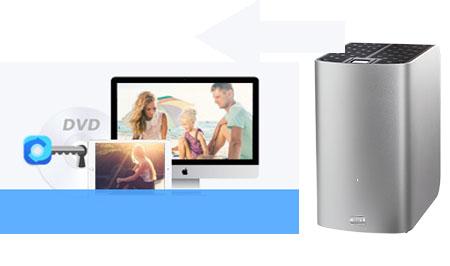
dvd video media file to nas
How to Transcode Video to Best Formats for NAS Media Severs
Follow to convert video file unsupported by media player to compatible format and resolution without losing quality using the best video converter when your NAS lacks the capability to transcode video movie file .
Top Network-attached Storage Features and Uses
1. Data Backup and Storage
Data backup and storage are the two most common uses. Many are using hard disk drive or Cloud for data backup. But if you have up to 100G or 1T materials, NAS has obvious advantages as it can extend the capacity to a few hundred GB or two TB or even more, and it’s cost-effective and easy to increase the storage size by attaching another hard drive. What’s more, users can set up auto data backup.
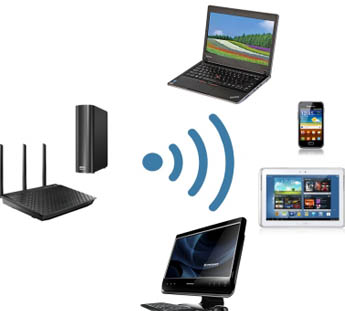
nas features
2. File Sharing
We have plenty many ways to share media file these days, like hard disk drive, USB flash drive, Cloud, email, data transfer software etc. But none of them can beat NAS down in terms of file sharing and accessibility. NAS offers remote access to data from anywhere and anytime. And home users can benefit a lot from entertainment sharing capabilities from room to room. If you have file stored on NAS, you can watch movies on NAS, while your families can listen to music or share other resources at the same time.
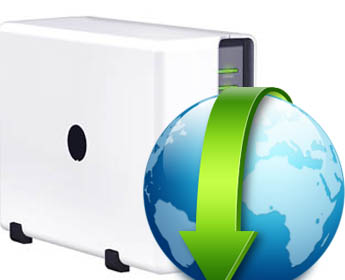
NAS uses
3. Free Offline Download
NAS features go beyond NAS definition - Network-attached storage. The next big advantage of NAS is offline download service. You can set up a download server and it can download your media file, like videos, movies, TV shows, music when you are busy at work. It’s nice to see that when you are back home, all these files has been added to download list.
4. Other main uses
More and more NAS devices offers plugins that make it easily to install Plex server, allowing to stream media file, like movies, TV shows, music etc. to DLNA-compliant devices, like smart TV, PS4, iPhone iPad, etc. A NAS makes all your data safe and some even provide built-in data encryption.
NAS Advantages and Disadvantages vs Flash Drive vs HD vs Cloud
Know deep about what NAS is, and whether NAS is right for you. Read NAS advantages and disadvantages compared to flash drive, hard disk drive and Cloud backup. First, NAS has some distinct advantages over flash drive, HD, and Cloud. The key benefits of a NAS are large storage capacity, safe data backup, much easier file accessibility and low cost. See the main advantages of NAS below.
1. Storage Capacity
Flash drive, external hard drive and Cloud service are good choices to deal with small-sized data backup. However, when it comes to a few hundred GB or even 1TB file storage, NAS comes to your first option. As mentioned above, a NAS can be attached with one or more hard drives, and can store even eight TB data. More hard drives can be added to NAS if more storage is needed.
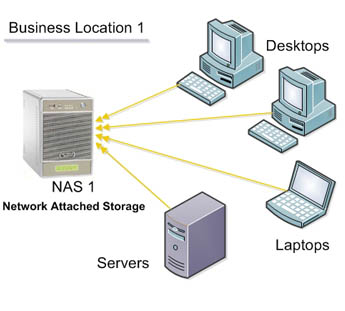
NAS advantages
2. Data Security
The next must know NAS pros is that Network-attached Storage provide unmatched data security. Cloud accounts are easy to be hacked, which leads to data leak. USB flash drive is easy to get lost and both hard disk drive and flash drive are easy to be damaged. All the data might be gone in a second using Cloud, flash drive or hard disk drive. While NAS is your private server, with data encryption and access controls added.
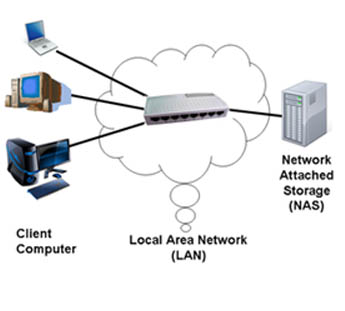
NAS advantages
3. File accessibility
NAS makes it possible to access file from multiple locations, from room to room, and even from countries to countries. This comes to very helpful at home or in an office when people need to use the same single file, and we’ve mentioned it on the Network-attached storage review of features and uses. The ease of data accessibility from NAS drive for Mac is a big pro that flash drive or Cloud can’t give.
4. Cost
Cloud storage and file sharing services are not cheap. For example, Dropbox gives 30-day free trial, and charges $12.5 per users per month with 2TB of space. NAS is one-off pay, with extremely large storage capacity. It’s cost-effective to buy a NAS.
NAS vs SAN vs DAN - What Are the Differences
What is the difference between NAS, SAN and DAS? NAS stands for Network-attached Storage, SAN stands for Storage Area Network, and DAS stands for Directly Attached Storage. NAS helps mount storage space over a network via CIFS or NFS protocols. SAN connects storage device and server using Fibre Channel or iSCSI. And any block device connected to your system can make a DAS. NAS vs SAN vs DAN, they all have their own advantages and disadvantages. To make the differences more clear, we put a list here.
| Storage Type | NAS | DAS | SAN |
|---|---|---|---|
| Price | Middle | Low | Relatively High |
| File Storage | Yes | Yes | Yes |
| Database Storage | Yes | Yes | Yes |
| Easy setup | Yes | Yes | No |
| OS Support | N/A | All | Win, Linux, UNIX etc. |
| Speed | Slow | Fast | Fast |
| Performance | Not Bad | Good | Good |
| Main Protocol | NFS/CIFS | ATA, SCSI, USB etc. | SCSI |
Related Articles

How to Copy DVD to MP4 format supported by NAS Media Server

How to Convert & Transfer DVD Movies to Plex, NAS, DLNA Media Server

How to Copy DVD Rentals from Netflix, Redbox, Amazon to Store on NAS

Best NAS Drives for Storing & Streaming Media Files

Best NAS for Mac Home Network and Office/Business

How to Backup Mac to External Hard Drive with/without Time Machine
![]()
Digiarty Software, Inc. (MacXDVD) is a leader in delivering stable multimedia software applications for worldwide users since its establishment in 2006.
Hot Products
Tips and Tricks
Company
Home | About | Privacy Policy | Terms and Conditions | License Agreement | Resource | News | Contact Us
Copyright © 2024 Digiarty Software, Inc (MacXDVD). All rights reserved
Apple, the Apple logo, Mac, iPhone, iPad, iPod and iTunes are trademarks of Apple Inc, registered in the U.S. and other countries.
Digiarty Software is not developed by or affiliated with Apple Inc.
Also read:
- [New] 2024 Approved Precise Time-Stamping on YouTube A Practical Approach
- [Updated] In 2024, From Camera Roll to YouTube The Ultimate Uploading Guide
- 2024年6月顶级影片加字幕工具列表 - 快速易用指南
- Expert Tips for Restoring Audio Functionality When Windows 10 Fails
- For People Wanting to Mock GPS on Realme C67 4G Devices | Dr.fone
- Gratis M4A-to-MP3 Konvertiering Overheenlijn - Onlinereisverslag Movavi
- Guía Rápida Para Transformar Tus Audios De AAC a MP3 Sin Costo Alguno Usando Una Herramienta en Línea Excelente
- In 2024, Exclusive Selection Best Desktop Pcs
- MP4ファイルを効率よく変換: Movaviの無料オンラインツール
- Revolutionizing Film Production: How the Latest Updates to Final Cut Pro for iPad Transform Creators' Experiences – Insights
- Top 11 Video Editing Software Choices for Stunning Collage Creations : Expert Reviews
- Troubleshooting: Fixing Casting Issues to Devices in Windows 11
- Извлечение Изображения Из Видео Файла - Инструкции По Movavi
- Title: NAS Explained: Comprehensive Guide to Network Attached Storage in Just 2 Minutes
- Author: Edward
- Created at : 2025-02-10 23:20:46
- Updated at : 2025-02-12 20:50:09
- Link: https://vp-tips.techidaily.com/nas-explained-comprehensive-guide-to-network-attached-storage-in-just-2-minutes/
- License: This work is licensed under CC BY-NC-SA 4.0.



